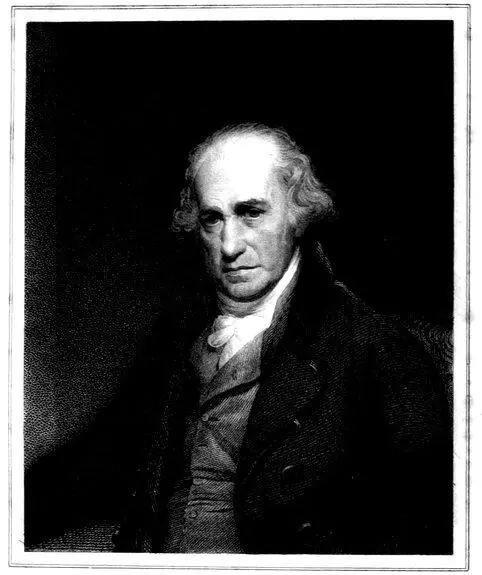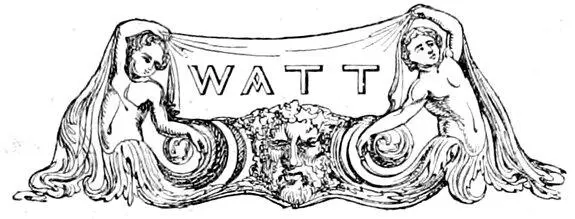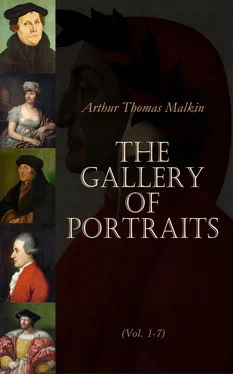What he published after the scheme of logic, is not important enough to merit a separate notice. His end was now approaching. In the summer of 1674 he was still cheerful, and in the possession of his intellectual faculties. But the vigour of his bodily constitution had been silently giving way, through a long course of years, to the ravages of gout. It was at length thoroughly undermined: and about the tenth of November, 1674, he died with tranquillity so profound, that his attendants were unable to determine the exact moment of his decease. He was buried, with unusual marks of honour, in the chancel of St. Giles’ at Cripplegate.
The published lives of Milton are very numerous. Among the best and most copious are those prefixed to the editions of Milton’s works by Bishop Newton, Todd, and Symmons. An article of considerable length, founded upon the latter, will be found in Rees’s Cyclopædia. But the most remarkable is that written by Dr. Johnson in his ‘Lives of the British Poets;’ production grievously disfigured by prejudice, yet well deserving the student’s attentions for its intrinsic merits, as well as for the celebrity which it has attained.


Engraved by C. E. Wagstaff. JAMES WATT. From a Picture by Sir W. Beechey in the possession of J. Watt Esq. of Aston Hall. Under the Superintendance of the Society for the Diffusion of Useful Knowledge. London. Published by Charles Knight, Pall Mall East.

Table of Contents
Those who by cultivating the arts of peace have risen from obscurity to fame and wealth, seldom leave to the biographer such ample memorials of their private lives as he could wish to work upon. The details of a life spent in the laboratory or in the workshop rarely present much variety; or possess much interest, except when treated scientifically for the benefit of the scientific reader. Such is the case with James Watt: the history of his long and prosperous life is little more than the history of his scientific pursuits; and this must plead our excuse if it chance that the reader should here find less personal information about him than he may desire. Fortunately his character has been sketched before it was too late, by the masterly hand of one who knew him well. Most of the accounts of him already published are said, by those best qualified to judge, to be inaccurate. The same authority is pledged to the general correctness of the article Watt, in the supplement to the Encyclopædia Britannica, and from that article the facts of this short memoir are taken.
Both the grandfather and uncle of James Watt were men of some repute in the West of Scotland, as mathematical teachers and surveyors. His father was a merchant at Greenock, where Watt was born, June 19, 1736, and where he received the rudiments of his education. Our knowledge of the first twenty years of his life may be comprised in a few short sentences. At an early age he manifested a partiality for the practical part of mechanics, which he retained through life, taking pleasure in the manual exercise of his early trade, even when hundreds of hands were ready to do his bidding. In his eighteenth year he went to London, to obtain instruction in the profession of a mathematical instrument-maker; but he remained there little more than a year, being compelled to return home by the precariousness of his health.
In 1757, shortly after his return home, he was appointed instrument-maker to the University of Glasgow, and accommodated with premises within the precincts of that learned body. Robert Simpson, Adam Smith, and Dr. Black, were then some of the professors; and from communication with such men, Watt could not fail to derive the most valuable mental discipline. With Dr. Black, and with John Robison, then a student, afterwards eminent as a mathematician and natural philosopher, he formed a friendship which was continued through life. In 1763 he removed into the town of Glasgow, intending to practise as a civil engineer, and in the following year was married to his cousin Miss Miller.
In the winter of 1763–4, his mind was directed to the earnest prosecution of those inventions which have made his name celebrated over the world, by having to repair a working model of a steam-engine on Newcomen’s construction, for the lectures of the Professor of Natural Philosophy. In treating this subject, we must presume that the reader possesses a competent acquaintance with the history and construction of the steam-engine. Those who do not possess the requisite knowledge, will find it briefly and clearly stated in a short treatise written by Mr. Farey, and in many works of easy access. Newcomen’s engine, at the time of which we speak, was of the last and most approved construction. The moving power was the weight of the air pressing on the upper side of a piston working in a cylinder; steam being employed at the termination of each downward stroke to raise the piston with its load of air up again, and then to form a vacuum by its condensation when cooled by a jet of cold water, which was thrown into the cylinder when the admission of steam was stopped. Upon repairing the model, Watt was struck by the incapability of the boiler to produce a sufficient supply of steam, though it was larger in proportion to the cylinder than was usual in working engines. This arose from the nature of the cylinder, which being made of brass, a better conductor of heat than cast-iron, and presenting, in consequence of its small size, a much larger surface in proportion to its solid content than the cylinders of working engines, necessarily cooled faster between the strokes, and therefore at every fresh admission consumed a greater proportionate quantity of steam. But being made aware of a much greater consumption of steam than he had imagined, he was not satisfied without a thorough inquiry into the cause. With this view he made experiments upon the merits of boilers of different constructions; on the effect of substituting a less perfect conductor, as wood, for the material of the cylinder; on the quantity of coal required to evaporate a given quantity of water; on the degree of expansion of water in the shape of steam: and he constructed a boiler which showed the quantity of water evaporated in a given time, and thus enabled him to calculate the quantity of steam consumed at each stroke of the engine. This proved to be several times the content of the cylinder. He soon discovered that, whatever the size and construction of the cylinder, an admission of hot steam into it must necessarily be attended with very great waste, if, in condensing the steam previously admitted, that vessel had been cooled down sufficiently to produce a vacuum at all approaching to a perfect one. If, on the other hand, to prevent this waste, he cooled it less thoroughly, a considerable quantity of steam remained uncondensed within, and by its resistance weakened the power of the descending stroke. These considerations pointed out a vital defect in Newcomen’s construction: involving either a loss of steam, and consequent waste of fuel, or a loss of power from the piston’s descending at every stroke through a very imperfect vacuum.
It soon occurred to Watt, that if the condensation were performed in a separate vessel, one great evil, the cooling of the cylinder, and the consequent waste of steam, would be avoided. The idea once started, he soon verified it by experiment. By means of an arrangement of cocks, a communication was opened between the cylinder, and a distinct vessel exhausted of its air, at the moment when the former was filled with steam. The vapour of course rushed to fill up the vacuum, and was there condensed by the application of external cold, or by a jet of water: so that fresh steam being continually drawn off from the cylinder to supply the vacuum continually created, the density of that which remained might be reduced within any assignable limits. This was the great and fundamental improvement.
Читать дальше















